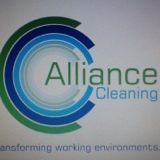Title Page
-
Audit Title
-
Client / Site
-
Conducted on
-
Prepared by
-
Personnel
Standard 1: Toilets, Showers, Baby changing facilities (Daily)
-
Area / Room number
-
Collect and dispose of refuse, change liner
-
Clean hand basins, urinals and toilets
-
Damp dust fixtures, fittings, switches, data points and skirting boards
-
Spot wipe walls, doors, tiles and paintwork
-
Replenish hand towels, toilet paper, soaps
-
Damp mop floors
Standard 1a: Toilets, Showers and Baby changing facilities (Weekly)
-
Area / Room number
-
Clean toilet brushes and holders
-
Damp dust inside toilet roll holders and paper towel holders
Standard 2: Clinical areas (Daily)
-
Area / Room number
-
Collect and dispose of refuse, change liner
-
Damp dust fixtures, fittings, switches, data points and skirting boards (only if accessible)
-
Spot wipe walls, doors, tiles, paintwork and mirrors
-
Replenish hand towels and soaps
-
Clean all sinks
-
Damp mop / suction clean floors
-
Clean / Damp dust top and underneath of couches
Standard 2a: Clinical areas (weekly)
-
Area / Room number
-
High dust, damp dust pipes and skirting boards (only if accessible)
-
Damp dust inside paper towel holders
-
Damp dust / vac chairs
Standard 3: Reception / waiting / corridors and speech therapy (Daily)
-
Area / Room number
-
Collect and dispose of refuse, change liner
-
High dust, damp dust pipes and skirting boards
-
Damp dust furniture, chairs, fixtures, fittings, data points, switches and skirting boards (only if accessible)
-
Spot wipe walls, doors, paintwork and internal glass
-
Damp mop or suction clean floors
Standard 3a: Reception / waiting / corridors and speech therapy (Weekly)
-
Area / Room number
-
High dust, damp dust pipes and skirting boards (only if accessible)
-
Damp dust inside paper towel holders
-
Damp dust / vac chairs
Standard 4: Offices (Daily)
-
Area / Room number
-
Collect and dispose of refuse, change liner
-
Clean wash basin (where fitted)
-
Replenish hand towels and soaps
-
Damp dust furniture, fixtures, fittings, switches, data points and skirting boards (only if accessible)
Standard 4a: Offices and Stairs (Weekly)
-
Area / Room number
-
Damp dust furniture, fixtures and fittings (only if accessible)
-
Damp mop, suction clean floors
Standard 4b: Offices (Fortnightly)
-
Area / Room number
-
High dust, damp dust pipes and skirting boards (only if accessible)
-
Spot wipe walls, doors, paintwork and internal glass
Standard 5: Kitchen / Messroom (Daily)
-
Area / Room number
-
Collect and dispose of refuse, change liner
-
Damp dust, fixtures, fittings, switches, skirting boards and high dust (only if accessible)
-
Spot wipe walls, doors, tiles, paintwork and mirrors
-
Clean sink and draining board (if clear of cups, plates etc)
-
Damp mop floor
-
Replenish hand towels and soaps (where fitted)
Standard 6: Cleaning cupboards (Daily)
-
Area / Room number
-
Mops are inverted and buckets are clean and dry
-
Clean sluice sink and hand basins (where fitted)
-
Replenish hand towels and soaps (where fitted)
-
Damp mop floor
Standard 7: Entrance / Bin areas (Weekly)
-
Area / Room number
-
Sweep bin area and entrance areas (where applicable)
Standard 8: All areas (Weekly)
-
Area / Room number
-
Clean radiators and external grills
Standard 9: All hard floors (Monthly)
-
Area / Room number
-
All hard floors to be scrubbed, spray cleaned
Standard 10: Carpets, chairs and blinds (Annually)
-
Area / Room number
-
Spot clean all carpeted areas
-
Thoroughly clean all chairs
-
Thoroughly clean all blinds
Infection control standard statement
-
Environment - The environment will be maintained appropriately to reduce the risk of cross infection.
-
Hand hygiene - Hands will be decontaminated correctly and in a timely manner using a cleansing agent to reduce the risk of cross contamination.
-
Personal protective equipment - Personal protective equipment is available and used appropriately to reduce the risk of cross infection.
-
Prevention of blood and bodily fluid exposure incidents, including needle stick injuries - Blood and body fluid exposure risks are managed in a way the reduces the risk of injury or infection.
-
Management of waste - Waste is disposed of safely without the risk of contamination or injury in accordance with legislation.
-
Equipment management - All clinical equipment is fit for purpose, decontaminated appropriately and stored correctly to reduce the risk of cross infection.
-
Organisational controls - Polices and procedures are in place to reduce the risk of cross infection.
Audit action plan
-
Details of any actions taken or required















